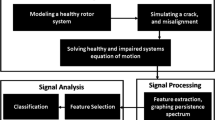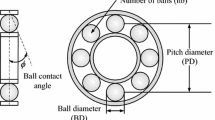Abstract
To overcome the limitations of the standard feedforward neural networks, high-order neural networks (i.e. ellipsoidal unit networks), which are very useful for fault diagnosis applications due to their bounded generalisation and extrapolation, are proposed. This paper describes the theory and structure of such networks. A method for initialising hyperellipsoids and a training algorithm based on the standard backpropagation algorithm are proposed. Utilising the properties of bounded generalisation and extrapolation inherent in such networks, a Hierarchical Diagnostic Artificial Neural Network (HDANN) based on the ellipsoidal unit network is put forward with respect to simultaneous diagnosis of multiple faults on rotating machines, which consists of several subnetworks and aims at dividing a large pattern space into several smaller subspaces. The subnetworks can be trained in subspaces respectively and the whole network is capable of simultaneous diagnosis of multiple faults. Finally, typical fault data from rotating machines are tested in the network. The research results show that HDANN can obtain more accurate and efficient diagnostic results and is useful for real-time condition monitoring and on-line diagnosis of rotating machines.
Similar content being viewed by others
Author information
Authors and Affiliations
Rights and permissions
About this article
Cite this article
Zhong, B., MacIntyre, J., He, Y. et al. High Order Neural Networks for Simultaneous Diagnosis of Multiple Faults in Rotating Machines. Neural Comput & Applic 8, 189–195 (1999). https://doi.org/10.1007/s005210050021
Published:
Issue Date:
DOI: https://doi.org/10.1007/s005210050021




